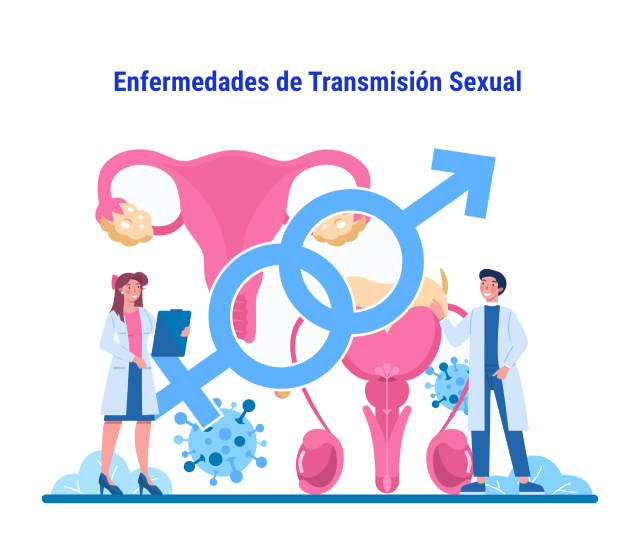Sexually transmitted diseases (STDs) are a group of infections that are transmitted from one person to another during sexual intercourse, whether vaginal, anal or oral. These diseases can be caused by bacteria, viruses, fungi and parasites, and can have serious health consequences if not treated properly. In this comprehensive analysis, we will delve into the complex reality of STDs, exploring their impact on public health, prevention strategies, and advances in treatment.
History and Evolution of STDs.
STDs have existed throughout human history and have been documented in various cultures since ancient times. However, knowledge and understanding of these diseases have evolved significantly over the centuries. In the past, STDs were misunderstood and stigmatized, and their treatment was rudimentary and often ineffective. With the advancement of medicine and science, better methods of diagnosis and treatment, as well as more effective prevention strategies, have been developed.
Types of STDs and their Symptoms.
The types of sexually transmitted diseases (STDs) are diverse and can present a wide range of symptoms. It is essential to understand each of these diseases and their manifestations to be able to identify and treat them appropriately.
Among the most common STDs are:
Chlamydia:
Chlamydia is a bacterial infection that affects both men and women and can be asymptomatic in many people. However, when symptoms do occur, they may include pain when urinating, abnormal vaginal or urethral discharge, abdominal pain, bleeding between menstrual periods, and pain during sexual intercourse.
Gonorrhea:
Gonorrhea, also caused by bacteria, can affect the genitals, rectum, and throat. Symptoms may include discharge of pus from the penis or vagina, pain or burning when urinating, abnormal vaginal bleeding, pain in the lower abdomen, and, in more severe cases, swelling of the genitals.
Syphilis:
Syphilis is a bacterial infection that progresses through different stages if not treated properly. Symptoms may vary depending on the stage of the disease and include a painless ulcer at the site of the primary infection (chancre), body rash, muscle pain, fever, swollen lymph nodes, and, in advanced stages, damage to the kidneys. internal organs and nervous system.
Genital herpes:
Genital herpes is caused by the herpes simplex virus (HSV) and is characterized by the appearance of painful blisters on the genitals or anal area. These blisters can break open and form open sores, which then scab over before healing. Other symptoms may include itching, painful urination, and fever.
Human Papillomavirus (HPV):
HPV is a group of viruses that can cause genital warts and increase the risk of cervical, anal, vaginal, vulvar, penile and throat cancer. Many people infected with HPV have no symptoms, but some may develop visible genital warts in the genital or anal area.
These are just a few examples of the most common STDs and their associated symptoms. It is important to remember that prevention, early detection and appropriate treatment are essential to manage these infections effectively and protect sexual and reproductive health.
Diagnosis and treatment.
Diagnosing STDs usually involves specific tests, which may include blood tests, cultures, laboratory tests, and physical exams. It is essential to seek medical attention if an STD is suspected, as early diagnosis can help prevent complications and limit the spread of the infection. Treatment of STDs usually involves the use of antibiotics, antivirals, antifungals, or specific medications depending on the type of infection.
Prevention of STDs.
Preventing STDs is essential to reduce the risk of contracting these infections and preventing their spread. Some preventive measures include practicing safe sex by using condoms consistently and correctly, limiting the number of sexual partners, avoiding intravenous drug use, getting vaccinated against HPV and hepatitis B, getting screened regularly if you are at increased risk of contract STDs, and communicate openly and honestly with sexual partners about medical history and condom use.
Impact on Public Health.
STDs have a significant impact on public health, both at the individual and community levels. These diseases can affect people's quality of life, cause emotional and psychological stress, increase the risk of medical complications, and have a considerable economic cost in terms of medical care and treatment. Additionally, STDs can contribute to the transmission of HIV/AIDS and other infections, posing an additional challenge to public health and disease prevention.
Education and Awareness.
Education and awareness are essential to prevent STDs and promote sexual and reproductive health. It is important that people have access to accurate and up-to-date information about STDs, including associated risks, prevention methods, the importance of screening and timely treatment. Sexual education programs in schools, community awareness campaigns, and sexual and reproductive health services play a crucial role in promoting safe sexual behaviors and reducing the incidence of STDs.
Investigation and development.
Continued research in the field of STDs is essential to develop new prevention, diagnosis and treatment strategies. Advances in science and technology are improving our understanding of these diseases and opening new possibilities for the prevention and control of STDs. From HPV vaccines to antiretroviral treatments for HIV, medical research continues to advance the fight against sexually transmitted diseases.
Sexually transmitted diseases represent a major challenge to public health and disease prevention worldwide. These infections can have serious health consequences if not treated properly, and can affect the quality of life of individuals and communities. It is essential to promote education and awareness about STDs, as well as encourage safe sexual practices and access to sexual and reproductive health services to prevent these infections and protect everyone's health.






